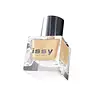What's inside
What's inside
 Key Ingredients
Key Ingredients

 Benefits
Benefits

 Concerns
Concerns

 Ingredients Side-by-side
Ingredients Side-by-side

Water
Skin ConditioningCI 77891
Cosmetic ColorantIsononyl Isononanoate
EmollientCyclomethicone
EmollientSynthetic Beeswax
Emulsion StabilisingIsohexadecane
EmollientButylene Glycol
HumectantPolymethyl Methacrylate
Polymethylsilsesquioxane
Diisostearyl Malate
EmollientDimethicone/Bis-Isobutyl PPG-20 Crosspolymer
EmollientLauryl PEG-10 Tris(Trimethylsiloxy)Silylethyl Dimethicone
EmulsifyingQuaternium-18 Bentonite
Cetyl PEG/PPG-10/1 Dimethicone
EmulsifyingSodium Chloride
MaskingSodium Hyaluronate
HumectantButyl Avocadate
Skin ConditioningGlyceryl Undecylenate
EmollientTrimethylsiloxysilicate
EmollientPolypropylsilsesquioxane
Octyldodecyl Stearoyl Stearate
EmollientPentylene Glycol
Skin ConditioningPolyglyceryl-2 Diisostearate
EmulsifyingTocopheryl Acetate
AntioxidantVp/Hexadecene Copolymer
Phenoxyethanol
PreservativeIron Oxides
CI 19140
Cosmetic ColorantCI 15850
Cosmetic ColorantCI 77266
Cosmetic ColorantWater, CI 77891, Isononyl Isononanoate, Cyclomethicone, Synthetic Beeswax, Isohexadecane, Butylene Glycol, Polymethyl Methacrylate, Polymethylsilsesquioxane, Diisostearyl Malate, Dimethicone/Bis-Isobutyl PPG-20 Crosspolymer, Lauryl PEG-10 Tris(Trimethylsiloxy)Silylethyl Dimethicone, Quaternium-18 Bentonite, Cetyl PEG/PPG-10/1 Dimethicone, Sodium Chloride, Sodium Hyaluronate, Butyl Avocadate, Glyceryl Undecylenate, Trimethylsiloxysilicate, Polypropylsilsesquioxane, Octyldodecyl Stearoyl Stearate, Pentylene Glycol, Polyglyceryl-2 Diisostearate, Tocopheryl Acetate, Vp/Hexadecene Copolymer, Phenoxyethanol, Iron Oxides, CI 19140, CI 15850, CI 77266
Water
Skin ConditioningIsododecane
EmollientDimethicone
EmollientTrimethylsiloxysilicate
EmollientDiisopropyl Sebacate
EmollientButylene Glycol
HumectantAlcohol
AntimicrobialPEG-10 Dimethicone
Skin ConditioningLauryl PEG-8 Dimethicone
Perlite
AbsorbentSodium Hyaluronate
HumectantSodium Chloride
MaskingDisteardimonium Hectorite
StabilisingPanax Ginseng Root Extract
EmollientPhenoxyethanol
PreservativePolymethylsilsesquioxane
Hdi/Trimethylol Hexyllactone Crosspolymer
Mica
Cosmetic ColorantAluminum Hydroxide
EmollientSilica Dimethyl Silylate
EmollientCaprylyl Glycol
EmollientSodium Stearoyl Glutamate
CleansingTocopheryl Acetate
AntioxidantGlycerin
HumectantEthylhexylglycerin
Skin ConditioningPolyhydroxystearic Acid
EmulsifyingLecithin
EmollientCellulose Gum
Emulsion StabilisingIsopropyl Myristate
EmollientEthylhexyl Palmitate
EmollientIsostearic Acid
CleansingPolyglyceryl-3 Polyricinoleate
EmulsifyingTriethoxycaprylylsilane
Silica
AbrasiveCI 77891
Cosmetic ColorantCI 77491
Cosmetic ColorantCI 77492
Cosmetic ColorantCI 77499
Cosmetic ColorantWater, Isododecane, Dimethicone, Trimethylsiloxysilicate, Diisopropyl Sebacate, Butylene Glycol, Alcohol, PEG-10 Dimethicone, Lauryl PEG-8 Dimethicone, Perlite, Sodium Hyaluronate, Sodium Chloride, Disteardimonium Hectorite, Panax Ginseng Root Extract, Phenoxyethanol, Polymethylsilsesquioxane, Hdi/Trimethylol Hexyllactone Crosspolymer, Mica, Aluminum Hydroxide, Silica Dimethyl Silylate, Caprylyl Glycol, Sodium Stearoyl Glutamate, Tocopheryl Acetate, Glycerin, Ethylhexylglycerin, Polyhydroxystearic Acid, Lecithin, Cellulose Gum, Isopropyl Myristate, Ethylhexyl Palmitate, Isostearic Acid, Polyglyceryl-3 Polyricinoleate, Triethoxycaprylylsilane, Silica, CI 77891, CI 77491, CI 77492, CI 77499
 Reviews
Reviews

Ingredients Explained
These ingredients are found in both products.
Ingredients higher up in an ingredient list are typically present in a larger amount.
Butylene Glycol (or BG) is used within cosmetic products for a few different reasons:
Overall, Butylene Glycol is a safe and well-rounded ingredient that works well with other ingredients.
Though this ingredient works well with most skin types, some people with sensitive skin may experience a reaction such as allergic rashes, closed comedones, or itchiness.
Learn more about Butylene GlycolCi 77891 is a white pigment from Titanium dioxide. It is naturally found in minerals such as rutile and ilmenite.
It's main function is to add a white color to cosmetics. It can also be mixed with other colors to create different shades.
Ci 77891 is commonly found in sunscreens due to its ability to block UV rays.
Learn more about CI 77891Phenoxyethanol is a preservative that has germicide, antimicrobial, and aromatic properties. Studies show that phenoxyethanol can prevent microbial growth. By itself, it has a scent that is similar to that of a rose.
It's often used in formulations along with Caprylyl Glycol to preserve the shelf life of products.
Polymethylsilsesquioxane is a silicone used as a film forming agent.
When applied to the skin, this ingredient creates an invisible film on the surface. This film still allows oxygen to pass through, but prevents moisture from escaping. This can help condition and hydrate the skin. It also leaves a silky feel when applied.
Polymethylsilsesquioxane has not been shown to clog pores. It has been deemed safe to use up to 55%, but most cosmetics use much less.
If you have concerns about using this ingredient, we recommend speaking with a professional.
Learn more about PolymethylsilsesquioxaneChances are, you eat sodium chloride every day. Sodium Chloride is also known as table salt.
This ingredient has many purposes in skincare: thickener, emulsifier, and exfoliator.
You'll most likely find this ingredient in cleansers where it is used to create a gel-like texture. As an emulsifier, it also prevents ingredients from separating.
There is much debate on whether this ingredient is comedogenic. The short answer - comedogenic ratings don't tell the whole story. Learn more about comegodenic ratings here.
The concensus about this ingredient causing acne seems to be divided. Research is needed to understand if this ingredient does cause acne.
Scrubs may use salt as the primary exfoliating ingredient.
Learn more about Sodium ChlorideSodium Hyaluronate is hyaluronic acid's salt form. It is commonly derived from the sodium salt of hyaluronic acid.
Like hyaluronic acid, it is great at holding water and acts as a humectant. This makes it a great skin hydrating ingredient.
Sodium Hyaluronate is naturally occurring in our bodies and is mostly found in eye fluid and joints.
These are some other common types of Hyaluronic Acid:
Learn more about Sodium HyaluronateTocopheryl Acetate is AKA Vitamin E. It is an antioxidant and protects your skin from free radicals. Free radicals damage the skin by breaking down collagen.
One study found using Tocopheryl Acetate with Vitamin C decreased the number of sunburned cells.
Tocopheryl Acetate is commonly found in both skincare and dietary supplements.
Learn more about Tocopheryl AcetateThis silicone is an emollient. Emollients create a thin film on the skin to prevent moisture from escaping.
It is not soluble in water and helps increase water-resistance in products.
According to a manufacturer, it can blend seamlessly with silicone oils, such as Cyclopentasiloxane.
Learn more about TrimethylsiloxysilicateWater. It's the most common cosmetic ingredient of all. You'll usually see it at the top of ingredient lists, meaning that it makes up the largest part of the product.
So why is it so popular? Water most often acts as a solvent - this means that it helps dissolve other ingredients into the formulation.
You'll also recognize water as that liquid we all need to stay alive. If you see this, drink a glass of water. Stay hydrated!
Learn more about Water